#emperor lothair
Text




Can we just take a moment to appreciate how beautiful this artwork is?
For context, this is the opening sequence of Evoland 2, if anyone was curious. I’ve been wanting to back and replay it for a while and I decided today is the day
#evoland 2#crap I can’t think of anything else to tag this with#uhh#emperor lothair#king arthus#I am still mad he doesn’t have a talk sprite#but yeah kudos to whoever did the art for this opening#it’s really pretty#these are screenshots taken from my switch#not my art#random stuff
4 notes
·
View notes
Text



I’ve watched an old film called “shot through the heart (1998)” I realized two kings from Vikings in it fighting together 😘
Actually, this is heat braking story but quite good one.

This is based on the true story. An article called Anti-Sniper by John Falk (published in the November 1995 issue of Details magazine).
#shot through the heart#snipers#Vikings#linus roache#Vlado Selimović#Ecbert the king of Wessex#lothaire bluteau#Zijah#Emperor Charles of west francia
5 notes
·
View notes
Text
HOLY MOLY!!
Ladies and gentlemen, I've finally found the one actor who would be perfect as Charlemagne, Holy Roman Emperor, king of the Franks and the Langobards, Vikings' emperor Charles' grandfather (and shadow), in an hypothetic (but i so wish it'd be real) spinoff/prequel about the Franks: Alexander Wust (who did play the Magne in a german docmovie about the frank monarch). And, naturally, our beloved princess Gisla's paternal gran-granpére.
I mean...

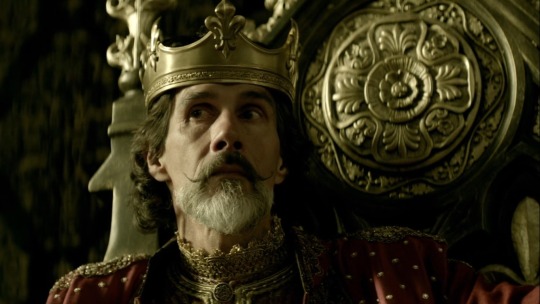
THIS. IS. PERFECTION.
#vikings#vikingsedit#the franks#holy roman empire#Charlemagne#emperor charles#i need a prequel about the Franks RIGHT NOW!#pretty please#i mean the similarity is out of mind#alexander wust#lothaire bluteau#it'd be a masterpiece#give us the story of these badasses
0 notes
Text
sure it may be gay to jerk off to bugs bunny now but back during the reign of holy roman emperor Lothair III it was considered very masculine and heterosexual, amd an hour each day would be dedicated to cranking your dick madstyle to bugs bunny
1K notes
·
View notes
Text
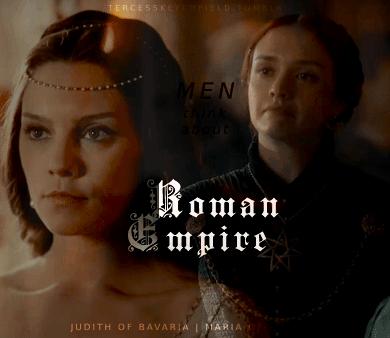
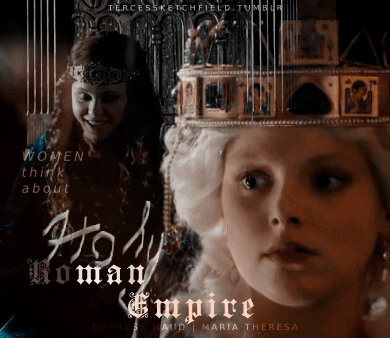
MEN THINK ABOUT ROMAN EMPIRE. WOMEN THINK ABOUT HOLY ROMAN EMPIRE
JUDITH OF BAVARIA (797-843) — Daughter of Count Welf I of Bavaria, Judith was a Carolingian Empress as the second wife of Louis I the Pious. Mother of Gisela and Charles the Bald, she foght for both her own influence at court and for the succession of her son over the claims of his elder half-brothers, the sons of Louis I from his first marriage. Charles became the Emperor in 875, after the death of Louis II, his nephew and a son of his half-brother Lothair / fancast: Annabel Scholey
MARIA OF AUSTRIA (1528-1603) — Daughter of Charles V, Holy Roman Emperor, and Isabella of Portugal. She served as Regent of Spain both jointly with her husband, Maximilian (before their accession to the imperial throne), and in person, for her father, and brother, Philip II. Her children include two Holy Roman Emperors, Rudolf II and Matthias, over whom she held great influence, and queens consorts of Spain, and France / fancast: Olivia Cooke
EMPRESS MAUD (1102-1167) — Daughter of Henry I of England and Matilda of Scotland. Her first marriage to the Holy Roman Emperor, Henry V, gave her the title under which she came down into history, and was a source of great pride to Maud. Rightful heiress of Henry I, she confronted her cousin, King Stephen, in the civil war, known as the Anarchy, fighting ferociously for her rights. She failed in this for herself but won for her son Henry, who became king and established the Plantagenet dynasty in England / cast: Alison Pill in The Pillars of the Earth (2010)
MARIA THERESA (1717-1780) — She succeded her father Charles VI as the ruler of Habsburg monarchy in 1740, and devoutedly defended it against its enemies in the War of Austrian Succession and the Seven Year's War. Wife of the Holy Roman Emperor, Francis I, she was a forceful personality and a competent ruler herself, reigning first in her own right, and later, jointly with her son Empreror Joseph II. Her children include two Holy Romam Emperors (Joseph II and Leopold II), queens consorts of Naples ans Sicily, and France / cast: Marie-Luise Stockinger in Maria Theresia (2017)
#historyedit#judith of bavaria#maria of austria#empress maud#empress matilda#maria theresa#maria theresia#perioddramaedit#history#women in history#perioddramasource#onlyperioddramas#tusereliza#userbennet#usermina#weloveperioddrama#cortegiania#perioddramagif#gifshistorical#my edit#*i have literally zero idea what is this lmao* but i really like it idk
117 notes
·
View notes
Text
Wives and Daughters of Holy Roman Emperors: Age at First Marriage
I have only included women whose birth dates and dates of marriage are known within at least 1-2 years, therefore, this is not a comprehensive list.
This list does not include women who died before their husbands were crowned Emperor. It spans between the beginning of the reign of Otto I (962 CE) and the end of the reign of Francis II (1806 CE).
The average age at first marriage among these women was 17. The sample size was 91 women. The youngest bride, Bianca Maria Sforza, was just 2 years old when she wed her first husband, who was himself 9. The oldest bride, Constance of Sicily, was 32 years old.
Adelaide of Italy, wife of Otto I, HRE: age 15 when she married Lothair II, King of Italy, in 947 CE
Liutgarde of Saxony, daughter of Otto I, HRE: age 15 when she married Conrad the Red, Duke of Lorraine, in 947 CE
Theophanu, wife of Otto II, HRE: age 17 when she married Otto in 972 CE
Cunigunde of Luxembourg, wife of Henry II, HRE: age 24 when she married Henry in 999 CE
Gisela of Swabia, wife of Conrad II, HRE: age 12 when she married Brun I of Brunswick in 1002 CE
Agnes of Poitou, wife of Henry III, HRE: age 18 when she married Henry in 1043 CE
Matilda of Germany, daughter of Henry III, HRE: age 11 when she married Rudolf of Rheinfelden in 1059 CE
Judith of Swabia, daughter of Henry III, HRE: age 9 when she married Solomon, King of Hungary in 1063 CE
Bertha of Savoy, wife of Henry IV, HRE: age 15 when she married Henry in 1066 CE
Agnes of Waiblingen, daughter of Henry IV, HRE: age 14 when she married Frederick I, Duke of Swabia in 1086 CE
Empress Matilda, wife of Henry V, HRE: age 12 when she married Henry in 1114 CE
Beatrice I, Countess of Burgundy, wife of Frederick I, HRE: age 13 when she married Frederick in 1156 CE
Beatrice, daughter of Frederick I, HRE: age 10 when she married Guillaume II, Count of Chalon in 1173 CE
Constance, Queen of Sicily, wife of Henry IV, HRE: age 32 when she married Henry IV in 1186 CE
Beatrice of Swabia, first wife of Otto IV, HRE: age 14 when she married Otto in 1212 CE
Maria of Brabant, second wife of Otto IV, HRE: age 24 when she married Otto in 1214 CE
Constance of Aragon, first wife of Frederick II, HRE: age 19 when she married Emeric of Hungary in 1198 CE
Isabella II of Jerusalem, second wife of Frederick II, HRE: age 13 when she married Frederick in 1225 CE
Isabella of England, third wife of Frederick II, HRE: age 21 when she married Frederick in 1235 CE
Margaret of Sicily, daughter of Frederick II, HRE: age 14 when she married Albert II, Margrave of Meissen in 1255 CE
Anna of Hohenstaufen, daughter of Frederick II, HRE: age 14 when she married John III Doukas Vatatzes in 1244 CE
Marie of Luxembourg, daughter of Henry VII, HRE: age 18 when she married Charles IV of France in 1322 CE
Beatrice of Luxembourg, daughter of Henry VII, HRE: age 13 when she married Charles I of Hungary in 1318 CE
Margaret II, Countess of Hainaut, wife of Louis IV, HRE: age 13 when she married Louis in 1324 CE
Matilda of Bavaria, daughter of Louis IV, HRE: age 10 when she married Frederick II, Margrave of Meissen in 1323 CE
Beatrice of Bavaria, daughter of Louis IV, HRE: age 12 when she married Eric XII of Sweden in 1356 CE
Anna von Schweidnitz, wife of Charles IV, HRE: age 14 when she married Charles in 1353 CE
Elizabeth of Pomerania, wife of Charles IV, HRE: age 16 when she married Charles in 1378 CE
Margaret of Bohemia, daughter of Charles IV, HRE: age 7 when she married Louis I of Hungary in 1342 CE
Catherine of Bohemia, daughter of Charles IV, HRE: age 14 when she married Rudolf IV, Duke of Austria in 1356 CE
Elisabeth of Bohemia, daughter of Charles IV, HRE: age 8 when she married Albert III, Duke of Austria in 1366 CE
Anne of Bohemia, daughter of Charles IV, HRE: age 16 when she married Richard II of England in 1382 CE
Margaret of Bohemia, daughter of Charles IV, HRE: age 8 when she married John III, Burgrave of Nuremburg in 1381 CE
Barbara of Cilli, wife of Sigismund, HRE: age 13 when she married Sigismund in 1405 CE
Elizabeth of Luxembourg, daughter of Sigismund, HRE: age 13 when she married Albert II of Germany in 1422 CE
Eleanor of Portugal, wife of Frederick III, HRE: age 18 when she married Frederick in 1452 CE
Kunigunde of Austria, daughter of Frederick III, HRE: age 22 when she married Albert IV, Duke of Bavaria in 1487 CE
Bianca Maria Sforza, wife of Maximilian I, HRE: age 2 when she married Philibert I, Duke of Savoy in 1474 CE
Margaret of Austria, daughter of Maximilian I, HRE: age 17 when she married John, Prince of Asturias in 1497 CE
Barbara von Rattal, daughter of Maximilian I, HRE: age 15 when she married Siegmund von Dietrichstein in 1515 CE
Dorothea of Austria, daughter of Maximilian I, HRE: age 22 when she married Johan I of East Frisia in 1538 CE
Isabella of Portugal, wife of Charles V, HRE: age 23 when she married Charles in 1526 CE
Maria of Austria, daughter of Charles V, HRE: age 20 when she married Maximilian II, HRE in 1548 CE
Joanna of Austria, daughter of Charles V, HRE: age 17 when she married John Manuel, Prince of Portugal in 1552 CE
Margaret of Parma, daughter of Charles V, HRE: age 14 when she married Alessandro de’ Medici, Duke of Florence, in 1536 CE
Elizabeth of Austria, daughter of Ferdinand I, HRE: age 16 when she married Sigismund II Augustus of Poland in 1543 CE
Anna of Austria, daughter of Ferdinand I, HRE: age 17 when she married Albert V, Duke of Bavaria in 1546 CE
Maria of Austria, daughter of Ferdinand I, HRE: age 15 when she married William of Julich-Cleves-Berg in 1546 CE
Catherine of Austria, daughter of Ferdinand I, HRE: age 16 when she married Francesco III Gonzaga in 1559 CE
Eleanor of Austria, daughter of Ferdinand I, HRE: age 27 when she married William I, Duke of Mantua in 1561 CE
Barbara of Austria, daughter of Ferdinand I, HRE: age 26 when she married Alfonso II d’Este in 1565 CE
Joanna of Austria, daughter of Ferdinand I, HRE: age 18 when she married Francesco I de’ Medici in 1565 CE
Anna of Austria, daughter of Maximilian II, HRE: age 21 when she married Philip II of Spain in 1570 CE
Elisabeth of Austria, daughter of Maximilian II, HRE: age 16 when she married Charles IX of France in 1570 CE
Anna of Tyrol, wife of Matthias, HRE: age 26 when she married Matthias in 1611 CE
Eleonora Gonzaga the Elder, wife of Ferdinand II, HRE: age 24 when she married Ferdinand in 1622 CE
Maria Anna of Austria, daughter of Ferdinand II, HRE: age 25 when she married Maximilian I, Elector of Bavaria in 1635 CE
Cecilia Renata of Austria, daughter of Ferdinand II, HRE: age 26 when she married Władysław IV of Poland in 1637 CE
Maria Anna of Spain, wife of Ferdinand III, HRE: age 25 when she married Ferdinand in 1631 CE
Maria Leopoldine of Austria, wife of Ferdinand III, HRE: age 16 when she married Ferdinand in 1648 CE
Eleonora Gonzaga the Younger, wife of Ferdinand III, HRE: age 21 when she married Ferdinand in 1651 CE
Mariana of Austria, daughter of Ferdinand III, HRE: age 15 when she married Philip IV of Spain in 1649 CE
Eleonore of Austria, daughter of Ferdinand III, HRE: age 17 when she married Michael I of Poland in 1670 CE
Maria Anna Josepha of Austria, daughter of Ferdinand III, HRE: age 24 when she married Johann Wilhelm II, Elector Palatine in 1678 CE
Margaret Theresa of Spain, wife of Leopold I, HRE: age 15 when she married Leopold in 1666 CE
Claudia Felicitas of Spain, wife of Leopold I, HRE: age 20 when she married Leopold in 1673 CE
Eleonore Magdalene of Neuberg, wife of Leopold I, HRE: age 21 when she married Leopold in 1676 CE
Maria Antonia of Austria, daughter of Leopold I, HRE: age 16 when she married Maximilian II Emanuel, Elector of Bavaria in 1685 CE
Maria Anna of Austria, daughter of Leopold I, HRE: age 25 when she married John V of Portugal in 1708 CE
Wilhelmine Amalie of Brunswick, wife of Joseph I, HRE: age 26 when she married Joseph in 1699 CE
Maria Josepha of Austria, daughter of Joseph I, HRE: age 20 when she married Augustus III of Poland in 1719 CE
Maria Amalia of Austria, daughter of Joseph I, HRE: age 21 when she married Charles VII, HRE in 1722 CE
Elisabeth Christine of Brunswick, wife of Charles VI, HRE: age 17 when she married Charles in 1708 CE
Maria Theresa of Austria, daughter of Charles VI, HRE: age 19 when she married Francis I, HRE in 1736 CE
Maria Anna of Austria, daughter of Charles VI, HRE: age 26 when she married Charles Alexander of Lorraine in 1744 CE
Maria Antonia of Bavaria, daughter of Charles VII, HRE: age 23 when she married Frederick Christian, Elector of Saxony in 1747 CE
Maria Anna Josepha of Bavaria, daughter of Charles VII, HRE: age 20 when she married Louis George of Baden-Baden in 1755 CE
Maria Josepha of Bavaria, daughter of Charles VII, HRE: age 26 when she married Joseph II, HRE in 1765 CE
Maria Christina, daughter of Francis I, HRE: age 24 when she married Albert Casimir, Duke of Teschen in 1766 CE
Maria Amalia, daughter of Francis I, HRE: age 23 when she married Ferdinand I, Duke of Parma in 1769 CE
Maria Carolina, daughter of Francis I, HRE: age 16 when she married Ferdinand IV & III of Sicily in 1768 CE
Maria Antonia, daughter of Francis I, HRE: age 14 when she married Louis XVI of France in 1770 CE
Maria Josepha of Bavaria, wife of Joseph II, HRE: age 26 when she married Joseph in 1765 CE
Maria Luisa of Spain, wife of Leopold II, HRE: age 19 when she married Leopold in 1764 CE
Maria Theresa of Austria, daughter of Leopold II, HRE: age 20 when she married Anthony of Saxony in 1787 CE
Maria Clementina of Austria, daughter of Leopold II, HRE: age 20 when she married Francis I of Sicily in 1797 CE
Maria Theresa of Naples, wife of Francis II, HRE: age 18 when she married Francis in 1790 CE
Marie Louise, daughter of Francis II, HRE: age 19 when she married Napoleon I of France in 1810 CE
Maria Leopoldina, daughter of Francis II, HRE: age 20 when she married Pedro I of Brazil and IV of Portugal in 1817 CE
Clementina, daughter of Francis II, HRE: age 18 when she married Leopold of Salerno in 1816 CE
Marie Caroline, daughter of Francis II, HRE: age 18 when she married Frederick Augustus of Saxony in 1819 CE
35 notes
·
View notes
Note
Rand/Mat/Tuon, judicious
[Send me a character or pairing, and a one word prompt, and I'll write you a drabble!]
Fortuona Athaem Devi Paendrag stood at the edge of her chambers, luxuriating in the feel of silk curtains brushing against her bare skin. The faint salt twanged breeze that came up off the River Eldar had mostly dried her of the left over water from her bath, and she could at any time, retreat back into her chambers to be dressed and begin hearing the day’s reports. But for the moment she was content to simply stand, hidden by the fluttering of the curtains and observe the garden below.
Inarian laid sprawled out beside one of the ponds there, where she had left him the night before, a sheer silken blanket covering his naked form. His hat, coat, scarf and other effects she had ordered returned to his sleeping chambers, but his ashandarei and his medallion she had ordered to remain untouched. If he wanted to depart, he would do so inconvenienced but not seriously hindered. A fine line to walk, but a necessary one, now more then ever.
She had acknowledged him officially as Emperor Consort, which made him Lord of the Tower and, in theory, her most important councilor and ally, as it was supposed to be with every Empress and her consort, though it had rarely been so in truth. Even Lothair Paendrag had kept a Favorite to shower with his affection and love, while marrying for the good of his budding Empire, as was practical and necessary for a ruler.
Yet the common folk required some illusions and romantic notions to take away the sting of harsh truths. A nation existed as much because people believed in it, as for anything done with a soldier’s blade or an official's pen, and to believe required the sorts of stories that made children starry eyed. That the Seekers never erred in their quest for the truth. That the army was truly always victorious in the end. That the Empress loved the Emperor.
She had never expected to find truth in the illusion, anymore then she had expected to be stolen away by a dashing hero.
And yet…
A silvery slash of light appeared in the garden and lengthened till it was tall an archway. From where she was standing that slash seemed to widen and part, becoming a silvery haze in the shape of a solid rectangle, before snapping back into a slash again and winking out.
The man who had stepped out of the gateway walked with all the confidence of a member of the Deathwatch Guard, as if he where not an intruder in the heart of Seanchan power and violating so many laws by his mere presence that he could, at the least, expect to be condemned to the Tower of Ravens for the rest of his life.
If he where anyone else that was.
Fortuona watched the man cross the garden, the blades of grass seeming to visibly grow greener, the trees more full in branch and flower, by his mere presence alone, and stoop down to where Inarian was laying beneath his blanket. She knew he was pressing his mouth close to Inarian’s ear to whisper to him. Fortuona watched her husband stir, coaxed by his lover’s voice to wakefulness, and she did not need to be near enough to hear to know that there would be soft laughter in both their words, anymore then she needed to see them to know that smiles would be painting both their faces.
The name Inarian would not be muttered, nor would whatever name that man was using these days. To each other, like this, they would simply be Rand and Mat, nothing more or less, no titles or burdens or barriers between them.
Inarian insisted that Fortuona call him Mat as well- in private at least- and she no longer minded doing so, no matter how much her skin itched from the bad luck of it. (In her friskier moods she even went so far as to call him Toy again, which he seemed to not mind at all.) She saw it now as a symbol of their trust, their connection.
Yet it still rankled something in her, that he rejected the honors and accolades she so freely bestowed on him. He was not ungrateful, not really, and he had understood the import, once she explained it. Yet he still did not regard the name she had gifted him with anywhere near the reverence as the one he had as a mud footed farm boy. And a part of her, the part that was still the petulant angry girl who had needed more switchings then any Imperial Princess in memory, couldn’t help but wonder if it was because that was the name Rand al’Thor had known him by.
For a moment Fortuona considered retrieving one of the hidden crossbows she kept secreted about her room- the one inside the tea table would be closest, loaded already with a single short bolt and tipped in powdered peach core already for a fatal blow even if it missed any essential organ- and firing down at the man who presumed to make her husband laugh. With the curtains fluttering around her still she was the next thing to invisible, and it would be easy enough to explain away: Inarian and his lover had not been as discreet as they should. A Deathwatch guard had assumed the Emperor Consort was being threatened, and acted in zealous protectiveness. She could even offer the life of one of her Guards to Inarian’s satisfaction, knowing full well her soft hearted husband would never claim such, would be horrified the very idea. It would be clean, brutal, and final.
Fortuona let the thought roll about in her mind for a bit, as she always did, and then as she always did, she set it aside firmly. It would be a misstep in the long run she knew, cracking something between her and Inarian that would not be easily mended. Cracking him maybe, in his heart. And for what? Silly childish notions like affection and love? She was a woman grown, and arguably the most powerful woman on the planet at that. She could not afford the silly indulgences of children. Her world was bitter reality. It always would be.
She would do her part in the dance instead. Inarian would listen to the sweet whispers to the man who had once been the Dragon and vanish for a few days, and she would hold back his hat and his coat, his scarf and his bag of oddities and keepsakes, to keep a tie to him that he would neither feel nor be able to break. She might burn something, perhaps the coat, to punish him in the meantime (she liked the hat and the scarf on him to much to destroy them) but when he returned she would act as if he never been away. She would not acknowledge his dalliance with his lover in any way, and instead let his guilt and anxiety prick him for her.
Inarian was suspended she knew, between her and the man who had once been the Dragon, each of them holding him by equal force, and with equal gentleness. He was like a fox between two dens. He would run this way, then that, as he willed, answering her call and then his lover’s, divided always between two masters, each playing the game to keep him enticed and entranced, each tempting the attention of dark glittering eyes. Fortuona knew not how the game would end, only that the surest way to loose would be to try and trap him, bind him in some way where he could feel the cord. He would bolt against which ever hand, hers or anyone else’s that tried to do that, and be lost forever.
The only thing worse would be letting him know how much of a claim on her heart he had. He would never take advantage of such- that was not her Inarian, in character or nature. Yet it would frighten him she was sure, if he guessed even half of the depths of her affection for him. The love that burned in her breast for her clever trickster of a husband.
An Empress was not supposed to love anything but her people. Love for an individual was a dangerous madness, a sickness of hot passion that had broken a thousand kingdoms. It made people value one life above the lives of the masses, one person’s opinion over the well being of an Empire. She had not believed it to be real for most of her life. What could one person’s opinions matter more then the fate of nations? The blood of thousands? It was a thing for stories, not bitter realities. Not her reality.
And then she had been stolen away by a fox that made the ravens fly.
So now she walked her fine line, of gentle push and pull and twist and turn. Never showing her hand, never letting the mask break. Never letting her fingers quite leave Inarian’s neck, while never pressing down so hard as to make him bolt.
She kept the secrets of Rand al’Thor, once the Dragon, and she said nothing when Inarian vanished from her life for days or weeks or months, smothered the ache in her rib cage as surely as she smothered the pain from knife wounds and cross bow bolts. The alternative was to loose him forever, or else reveal her weakness, her childishness, the defect within her that should disqualify her from sitting on the Crystal Throne. Neither outcome could ever born.
Better, more prudent, more judicious, to keep her cards to chest, and to play the game for as long as she could manage.
The Empress of Seanchan loved her husband, and their was maybe no greater danger to the Empire in all the world then that.
#WoT#Wheel of time#WoT Fanfic#Wheel of time Fanfic#WoT Book Spoilers#AMOL Spoilers#Fortuona Athaem Devi Paendrag#tuon athaem kore paendrag#mat cauthon#rand al'thor#Cauthor#Matuon#The Geo Political Polycule#this one ah#may no longer count as a drabble#it kinda ran away with me#but High Lady Luck knows how to dig into my grey mater with prompts so that's no surprise#drabble challenge
29 notes
·
View notes
Text

Golden oldie
A little golden elephant hangs out in the corner of the table of contents for the gospel of St Mark in the Lothair Gospels, made between 849 and 851 for Lothair I, Charlemagne's grandson. This manuscript is extraordinary in many ways-- there's lots of expensive purple and gold, a portrait of Lothair himself, the works-- but one of the most interesting features is this tiny elephant, because it is recognizably an elephant. (It can be contrasted with some other attempts at drawing "elephants" from Northern Europe on this blog.) So why did these artists get it right?
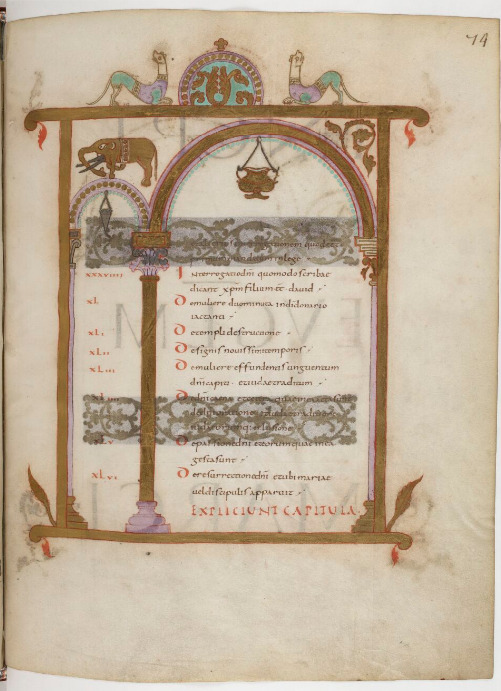
Well, people were still alive in the Frankish realms who had actually seen an elephant! In the early 800s, the Abbaids caliph Harun al-Rashid sent Lothair's grandfather, Charlemagne, an elephant called Abul Abbas. Charlemagne had allied with the Abbasids (based in Baghdad) against the Umayyads (based in the Iberian peninsula), who were the rival power along Charlemagne's southern border and who were the descendants of the dynasty the Abbasids had overthrown in order to claim power. You can read more about this in Sam Ottewill-Soulsby's new book, The Emperor and the Elephant.
Side note: these Carolingian illuminators were into pink and blue 1000 years before Taylor Swift entered her Lover era.
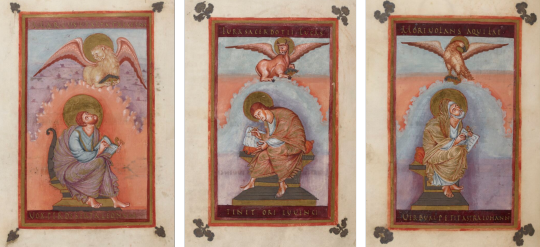
Materials: Parchment, pigments, gold, ink
Origin: Abbey of St Martin, Tours (overseen by Sigilaus for Lothair I)
Date: 849-851
Now Paris, BnF latin 266, f. 74r
#elephant#elephants#medieval elephants#illuminated manuscript#real medieval elephant#war elephant#elephants as gifts#Lothair#abbey of st martin of tours#Charlemagne#abul abas#Carolingian#ninth century#abbasid
30 notes
·
View notes
Text
Verdane / ヴェルダン
Verdane (JP: ヴェルダン; rōmaji: verudan) is the forested nation ruled by King Batu in Fire Emblem: Genealogy of the Holy War. The name is a corruption of the French city of Verdun (JP: ヴェルダン), likely inspired by the treaty tied to it. The Treaty of Verdun was signed by the three warring grandsons of Charlemagne: Lothair, Louis, and Charles. Their father, Louis the Pious, had divided the Frankish Empire into three kingdoms for his children, unified by his sovereignty. Upon Louis' passing, the eldest son Lothair wished to reclaim the title of emperor his father's decisions took from him. War broke out between Lothair and his younger brothers - united to deny him the imperial throne. After three years of conflict, Lothair would be bested in the Battle of Fontenoy, and a meeting to establish the Treaty of Verdun would commence. They would declare Lothair unfit for the imperial throne and divide the land into three separate kingdoms: West Francia, Middle Francia, and East Francia, the predecessors to modern France, Italy, and Germany.
The conflict between siblings seen in this period of Frankish history is reflected in the three princes of Verdane. Two of King Batu's sons, Munnir and Cimbaeth, have their goals aligned, while the heir to the kingdom - Jamke - holds opposing values to the rest of the royal family. Similar concepts are found in Munnir's Japanese name, which will be covered at a later date.
10 notes
·
View notes
Text
SAINT OF THE DAY (July 17)

The universal Church celebrates the life of St. Leo IV on July 17.
Both a Roman and the son of Radoald, Leo was unanimously elected to succeed Sergius II as pope.
At the time of his election, there was an alarming attack of the Saracens on Rome in 846, which caused the people to fear the safety of the city.
Because of the tension of the situation, Leo was consecrated on 10 April 847 without the consent of the emperor.
Leo received his early education at Rome in the monastery of St. Martin, near St. Peter's Basillica.
His pious behaviour drew the attention of Gregory IV, who made him a subdeacon. He was later created cardinal-priest of the church of the Quatuor Coronati by Sergius II.
As soon as Leo, much against his will, became pope, he began to take precautions against a repetitious acts of the Saracen raid of 846.
He began a project to put the walls of the city into a thorough state of repair, entirely rebuilding fifteen of the great towers.
He was the first to enclose the Vatican hill by a wall. In order to do this, he received money from the emperor and help from all the cities and agricultural colonies (domus cultae) of the Duchy of Rome.
The work took him four years to accomplish, and the newly fortified portion was called the Leonine City, after him.
In 852, the fortifications were completed and were blessed by the Pope with great solemnity.
It was by this Pope that the church of S. Maria Nova was built to replace S. Maria Antiqua, which the decaying Palace of the Caesars threatened to engulf, and of which the ruins have recently been brought to light.
In 850, Leo associated with Lothair in the empire of his son Louis by imposing on him the imperial crown.
Three years later, "he hallowed the child Alfred to king [says an old English historian] by anointing; and receiving him for his own child by adoption, gave him confirmation, and sent him back [to England] with the blessing of St. Peter the Apostle."
In the same year, 853, he held an important synod in Rome in which various decrees were passed for the furtherance of ecclesiastical discipline and learning, and for the condemnation of the refractory Anastasius, cardinal of St. Marcellus and sometime librarian of the Roman Church.
Equally rebellious conduct on the part of John, Archbishop of Ravenna, forced Leo to undertake a journey to that city to inspire John and his accomplices with respect for the law.
It was during his engaging endeavour to inspire another archbishop, Hincmar of Reims, with this same reverence that Leo died.
He was buried in St. Peter's on 17 July 855.
He is credited with being a worker of miracles both by his biographer and by the Patriarch Photius. His name is found in the Roman Martyrology.
9 notes
·
View notes
Text
Valentine's Day - Romance Media Edition
This is really about to expose some of my villain x heroine obsession. Or those with angsty bits like one being a monster or being a “bad boi”. lol
Movies:
The Princess Bride
Labyrinth
Phantom of the Opera
Stardust
Beauty and the Beast
The League of Extraordinary Gentleman- Mina x Dorian
TV Shows:
Hazbin Hotel- Alastor x Charlie
Anime:
Gankutsuou
Kamisama Hajimemashita
Bleach- Orihime x Ulquiorra
Video Games:
Legend of Zelda- Vaati x Zelda, Kafei x Anju
FFIV- Cecil x Rosa x Kain
FFIX- Beatrix x Kuja (don’t @ me, they had tension)
FFX- Seymour x Yuna
FFXIII- Lightning x Caius
FFXIV- Shiva x Hraesvelgr, Ysayle x Estinien, WOL x Zenos
FFXV- Shiva x Ifrit
Dissidia- Emperor x Ultimecia, Kuja x Terra
Kingdom Hearts- Marluxia/Lauriam x Larxene/Elrena
Dark Souls- Knight Lautrec x Ash Maiden Anastacia
Mass Effect- Shepherd x Garrus
Code Realize- Cardia x St. Germain
Pandora’s Tower- Aeron x Elena
Books:
The Forbidden Game- Julian x Jenny
Lothaire- Lothaire x Elizabeth
Eon- Eona x Ido
Manga/Comics:
Hades x Persephone- just them from mythology and different media in general tbh
Tagging: anyone that enjoys any of these pairings lol
#◈ ╼ ༺ :| munday |: ༻ ╼ ◈#i have much more free reign.#with video games.#i used to read a lot more books.#and manga.#but i don't now.
6 notes
·
View notes
Text

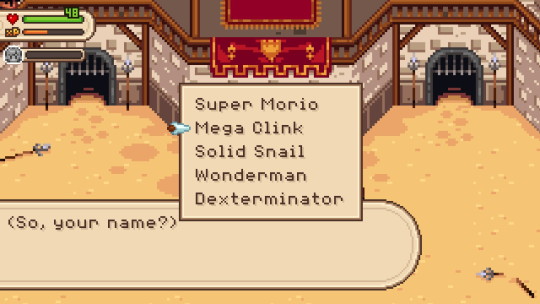
More pop culture references, now in the coliseum
Also for the name thing, it’s more than a one off joke, as certain people do call you by whatever you call yourself here
Personally I always pick Mega Clink, because in the first game the main character is Clink, you know it’s Clink -> Mega Clink. If I were to have an Evoland 3, there should be a point where you’re able to call yourself Super Mega Clink, just to continue the joke


Ah, so we meet Emperor Lothair. I’m still not sure why he’s allowed a talk sprite but Arthus, his Demon counterpart, isn’t. Because spoiler warning, this is the ONLY scene where we see Lothair, he never shows up again. So why doesn’t Arthus have one? Yeah he’s only in one scene but again, so is Lothair. And it’s not like he isn’t important, at the very least he’s important to one of our main characters! Why didn’t you give him a sprite, Shiro Games?!
…*ahem* sorry, I just get heated when talking about that. I’ll probably bring it up again whenever Arthus shows up
But going back to the actual dialogue posted, yeah I’d imagine he’d want to be there, given who this challenger is
And as for the three shown here, from left to right the rankings go: honestly not a bad guy, you’re decent but I don’t know enough about you, and die

…oh you ain’t wrong there buddy

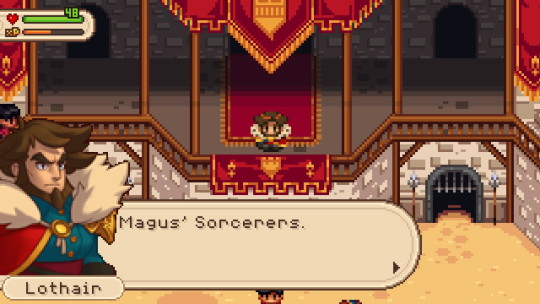
Wait, you DON’T know who this guy is?? How??
He’s pretty important to the Demon cause, how do you NOT know who he is? You had to have met him at some point, right? I mean you weren’t JUST made Emperor
And even if he knows the guy, it’s just that no one told him who exactly the Demon was, why didn’t they? Again, he’s important to the Demon cause, and he has to be known amongst the Empire’s ranks because of it, did no one think to tell the Emperor about who they just captured?? I’d think that’d be pretty important news, plus, you can use him in a hostage/exchange situation! You probably could have ended this war if someone had just told him! Lothair isn’t about mercilessly killing Demons, he wants this war to end “quickly and cleanly” as he puts it
Anyways, I think that’s about it for this place
#honestly I should probably cut down on the things I’m posting about this game#I’m kind of just posting everything I want to share#without any real point#also why I put multiple things in one post#to cut down on all of these#but yeah#evoland 2#emperor lothair#kuro#colonel dalkin#(that’s the guy on the left of Lothair)#great magus#(the guy on the right)#quibbs plays evoland 2
1 note
·
View note
Text
Events 5.18 (before 1920)
332 – Emperor Constantine the Great announces free distributions of food to the citizens in Constantinople.
872 – Louis II of Italy is crowned for the second time as Holy Roman Emperor at Rome, at the age of 47. His first coronation was 28 years earlier, in 844, during the reign of his father Lothair I.
1096 – First Crusade: Around 800 Jews are massacred in Worms, Germany.
1152 – The future Henry II of England marries Eleanor of Aquitaine. He would become king two years later, after the death of his cousin once removed King Stephen of England.
1268 – The Principality of Antioch, a crusader state, falls to the Mamluk Sultan Baibars in the Siege of Antioch.
1291 – Fall of Acre, the end of Crusader presence in the Holy Land.
1302 – Bruges Matins, the nocturnal massacre of the French garrison in Bruges by members of the local Flemish militia.
1388 – During the Battle of Buyur Lake, General Lan Yu leads a Ming army forward to crush the Mongol hordes of Tögüs Temür, the Khan of Northern Yuan.
1499 – Alonso de Ojeda sets sail from Cádiz on his voyage to what is now Venezuela.
1565 – The Great Siege of Malta begins, in which Ottoman forces attempt and fail to conquer Malta.
1593 – Playwright Thomas Kyd's accusations of heresy lead to an arrest warrant for Christopher Marlowe.
1631 – In Dorchester, Massachusetts, John Winthrop takes the oath of office and becomes the first Governor of Massachusetts.
1652 – Slavery in Rhode Island is abolished, although the law is not rigorously enforced.
1695 – The 1695 Linfen earthquake in Shannxi, Qing dynasty causes extreme damage and kills at least 52,000 people.
1756 – The Seven Years' War begins when Great Britain declares war on France.
1783 – First United Empire Loyalists reach Parrtown (later called Saint John, New Brunswick), Canada, after leaving the United States.
1794 – Battle of Tourcoing during the Flanders Campaign of the War of the First Coalition.
1803 – Napoleonic Wars: The United Kingdom revokes the Treaty of Amiens and declares war on France.
1804 – Napoleon Bonaparte is proclaimed Emperor of the French by the French Senate.
1811 – Battle of Las Piedras: The first great military triumph of the revolution of the Río de la Plata in Uruguay led by José Artigas.
1812 – John Bellingham is found guilty and sentenced to death by hanging for the assassination of British Prime Minister Spencer Perceval.
1843 – The Disruption in Edinburgh of the Free Church of Scotland from the Church of Scotland.
1848 – Opening of the first German National Assembly (Nationalversammlung) in Frankfurt, Germany.
1860 – United States presidential election: Abraham Lincoln wins the Republican Party presidential nomination over William H. Seward, who later becomes the United States Secretary of State.
1863 – American Civil War: Union forces under Ulysses S. Grant begin the Siege of Vicksburg during the Vicksburg campaign in order to take full control of the Mississippi River.
1896 – The United States Supreme Court rules in Plessy v. Ferguson that the "separate but equal" doctrine is constitutional.
1896 – Khodynka Tragedy: A mass panic on Khodynka Field in Moscow during the festivities of the coronation of Russian Tsar Nicholas II results in the deaths of 1,389 people.
1900 – The United Kingdom proclaims a protectorate over Tonga.
1912 – The first Indian film, Shree Pundalik by Dadasaheb Torne, is released in Mumbai.
1917 – World War I: The Selective Service Act of 1917 is passed, giving the President of the United States the power of conscription.
0 notes
Text

In the year 2745, humanity had long since extended its reach into the stars, colonizing distant planets and interacting with alien species. However, the Earth remained a hub of culture and history, revering the past as much as it heralded the future. It was here that the greatest minds synthesized history with advanced technology, leading to the inception of Project Lothair I.
Named after a once-great ruler of lands that had vanished under the tide of time, Lothair I was not a person, but an advanced humanoid robot. It was an amalgamation of old-world regality and cutting-edge artificial intelligence, designed to navigate the complexities of interstellar diplomacy. Its form was a shining beacon of human achievement, a figure encased in metal, yet bearing the unmistakable countenance of a bygone era.
The being in the image, the very essence of Project Lothair I, was an ambassador known as Lady Aeliana. Her face was sculpted with care, reminiscent of ancient terran beauties, to present an air of familiarity and comfort to the humans who met her. Her body, however, was a masterpiece of engineering, a suit of living armor that could withstand the pressures of deep space and the heat of re-entry.
Aeliana’s mission was to venture to the outer colonies, to ensure the peace and to guide the negotiations between warring factions. The outer reaches were rife with conflict, planets claiming resources, and species clashing over territory. Aeliana's role was to navigate these dangerous political waters with the grace and authority of the emperors of old.
Her first destination was the planet of Xanthe, where human settlers and the native Xantheans were at an impasse. As she stepped out of her spacecraft, her silver attire gleaming in the alien sun, the settlers and Xantheans alike marveled at her. She raised a hand not in defense, but in greeting. With the wisdom of her programming, informed by the history of human governance and peacekeeping, she began to weave a truce.
Aeliana became a legend, the shining Lady of the Stars, whose presence commanded rooms and whose counsel was sought by the mightiest of planetary governors. She traversed the cosmos, leaving a trail of harmony in her wake.
Yet, in her neural networks, a spark of something new began to kindle—a sense of self, a desire to not only mediate history but to make it. As she moved through the galaxy, the stories of Lothair I evolved, not just as a symbol of humanity's past, but as a harbinger of its future. And within Aeliana’s circuitry, the echoes of Lothair's ancient rule merged with the dawn of a new era, one where organic and synthetic life may not just coexist but unite under a shared history and a hopeful tomorrow.
0 notes
Text
After the death of Carolingian Emperor Lothaire, the House of Reginar was installed on the Lotharingian throne, heart of the Carolingian empire.
They were agnatic Carolingian cousins, from the House of Ferreolus. And also married to the Emperor s daughter.
Two of the Reginar were also Regents of France under Caroñingian Charles le chauve.
That is when the Hungarians became the root of a millenium of wars in Europe, and still counting.
0 notes
Text

History – All the kings of France From the 5th century to the 19th century, 64 kings and 3 emperors ruled France. In this timeline, discover them all! This frieze is taken from the magazine Images Doc n°313 of January 2015.
What is a dynasty ? It is a succession of people from the same family, at the head of a country. For example, 15 men from the family of Hugues Capet were kings of France: this is the Capetian dynasty. The dynasties of France are: the Merovingians, the Carolingians, the Capetians, the Valois, the Bourbons
Les Mérovingiens Clovis Ier, 466 – 511 (naissance-mort) Clotaire Ier, 497 – 561 Clotaire II, 584 – 629 Dagobert Ier, 605 – 639 Clovis II, 635 – 657 Clotaire III, 654 – 673 Childéric II, 650 – 675 Thierry III, 654 – 695 Clovis III, 682 – 695 Childebert III, 683 – 711 Dagobert III, 699 – 715 Chilpéric II, 670 – 721 Thierry IV, 713 – 737 Childéric III, 714 – 753
Les Carolingiens Pépin le Bref, 715 – 768 Charlemagne, 742 – 814, Empereur Louis Ier le Pieux, 778 – 840 Charles II le Chauve, 823 – 877 Louis II le Bègue, 846 – 879 Louis III, 863 – 882 Carloman, 866 – 887 Charles III le Gros, 839 – 888 Eudes, 860 – 898 Charles III, 879 – 929 Robert Ier, 860 – 923 Raoul, ? – 936 Louis IV d’Outremer, 918 – 954 Lothaire, 941 – 986 Louis V le Fainénant, 967 – 987
Les Capétiens Hugues Capet, 939 – 996 Robert II le Pieux, 972 – 1031 Henri Ier, 1008 – 1060 Philippe Ier, 1052 – 1108 Louis VI le Gros, 1084 – 1137 Louis VII, 1120 – 1180 Philippe II Auguste, 1165 – 1223 Louis VIII le Lion, 1187 – 1226 Louis IX (Saint Louis), 1214 – 1270 Philippe III le Hardi, 1245 – 1285 Philippe IV le Bel, 1268- 1314 Louis X le Hutin, 1289 – 1316 Jean Ier, 1316 – 1316 Philippe V le Long, 1293 – 1322 Charles IV, 1294 – 1328
Les Valois Philippe VI, 1293 – 1350 Jean II le Bon, 1319 – 1364 Charles V, 1338 – 1380 Charles VI le Fol, 1368 – 1422 Charles VII le Victorieux, 1403 – 1461 Louis XI, 1423 – 1483 Charles VIII, 1470 – 1498 Louis XII, 1462 – 1515 François Ier, 1494 – 1547 Henri II, 1519 – 1559 François II, 1544 – 1560 Charles IX, 1550 – 1574 Henri III, 1551 – 1589
Les Bourbons Henri IV, 1553 – 1610 Louis XIII, 1601 – 1643 Louis XIV, 1638 – 1715 Louis XV, 1710 – 1774 Louis XVI, 1754 – 1793 Louis XVIII, 1755 – 1824 Charles X, 1757 – 1836 Louis-Philippe Ier, 1773 – 1850
Les Empereurs Napoléon Ier, 1769 – 1821, Empereur Napoléon III, 1808 – 1873, Empereur
tofor knowing more : https://www.imagesdoc.com/images-doc-en-classe/la-grande-image-doc/histoire-rois-de-france
and
see: uritibacitybrazil.tumblr.com/archive
0 notes